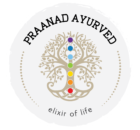
Basti Chikitsa: A Traditional Ayurvedic Method of Healing
Overview
Within the ancient science of Ayurveda, one of the most potent treatments is called Basti Chikitsa, or Ayurvedic enema therapy. It is regarded as one of the five main Panchakarma therapies, which are meant to detoxify and cleanse the body. Though it also has wider uses in preserving and re-establishing balance among the body’s three doshas—vata, pitta, and kapha—basti is especially highly regarded for its efficacy in treating disorders associated with the vata dosha.
Background Information from Scripture and History
Ayurvedic books like the Ashtanga Hridaya, Sushruta Samhita, and Charaka Samhita are the foundation of Basti Chikitsa. Because of its capacity to nourish and purify the body, these ancient texts characterise basti as a crucial therapy. One of the oldest and most respected texts in Ayurveda, the Charaka Samhita, highlights the importance of Basti in removing accumulated doshas, especially vata, which is frequently thought to be the primary cause of many disorders when it is out of balance.
Basti Types
Basti Chikitsa can be broadly divided into two categories:
Niruha Basti (Decoction Enema): This kind of basti combines oils, honey, and other ingredients with herbal decoctions. Its main goal is to rid the body of vitiated doshas, particularly vata. Niruha Basti is recommended for a variety of disorders, including neurological conditions, joint pain, and digestive problems. It is typically taken during the day.
Anuvasana Basti, also known as an oil enema, is thought to be nourishing and strengthening and typically involves medicated oils. Usually taken on its own or after Niruha Basti when vata needs to be balanced without causing pitta or kapha to become aggravated. Those with dryness, constipation, and general debility benefit from this kind of basti.
How Basti Chikitsa operates
Because Basti Chikitsa is such a specialised procedure, only an Ayurvedic practitioner with training should perform it. There are multiple steps in the process:
- Purva Karma (Preparatory Measures): Swedana (sweating) and oleation (both internal and external) are used to prepare the patient for the therapy. By taking these preemptive steps, the body’s toxins are released and made easier to eliminate by entering the gastrointestinal tract.
- Pradhana Karma (Main Procedure): The enema’s administration is the primary procedure. In Niruha Basti, the rectum is used to introduce a decoction containing a variety of ingredients into the colon. Anuvasana Basti is treated with medicated oil. It is recommended that the patient lie on their left side for the duration of the procedure.
- Paschat Karma (Post-Therapy Measures): The patient may be given specific dietary instructions to follow and is advised to rest following the administration of the Basti. In order to guarantee the efficacy of the treatment and to avoid complications, post-therapy care is essential.
Mechanism of action at Cellular Level
Basti Chikitsa is thought to function at the cellular level through dosha restoration and body purification. The colon is thought to be the seat of the vata dosha, and this is where the Basti is administered. Basti aids in the removal of accumulated toxins (ama) and vitiated doshas by directly administering the medicated substances into the colon. Through the intestinal walls, the medicinal ingredients are absorbed and work on the deeper tissues (dhatus) to support and detoxify cells.
The herbal and oil blend used in basti is intended to permeate the tissues deeply, revitalising them and bringing them back to their original state. Treating neurological disorders and fostering mental stability and clarity are greatly aided by the action of Basti on the nervous system, specifically in balancing and calming the vata dosha.
Therapeutic Benefits of Basti Chikitsa
Basti Chikitsa has numerous medicinal advantages, including:
- Vata Disorders: Constipation and irritable bowel syndrome are among the ailments that Basti is especially good at treating. Other vata-related conditions it treats include arthritis, paralysis, sciatica, and digestive issues.
- Detoxification: It aids in the elimination of toxins from the colon, enhances digestion, and advances general well-being.
- Rejuvenation: Basti increases the body’s strength, energy, and longevity by nourishing and revitalising it.
- Benefits for Nerves: By reducing nerve activity and enhancing mental acuity, it helps treat neurological disorders.
- Hormonal Balance: Basti is also used to treat problems with the reproductive system and hormone imbalances.
Contraindications of Basti Chikitsa
Although very effective, Basti Chikitsa is not for everyone. It should not be administered to people who have severe anaemia, bleeding disorders, acute diarrhoea, or other gastrointestinal issues. Before having a basti, people with certain medical conditions or those who are pregnant should speak with an Ayurvedic practitioner.
conclusion
One of Ayurveda’s most profound and potent treatments, basti chikitsa promotes deep cleansing, rejuvenation, and mental and physical healing. Its use, based on age-old knowledge, is still a fundamental component of Ayurvedic care for a range of illnesses. Basti Chikitsa, when properly applied by a trained practitioner, can result in significant health benefits, re-establishing harmony and balance in the body.
